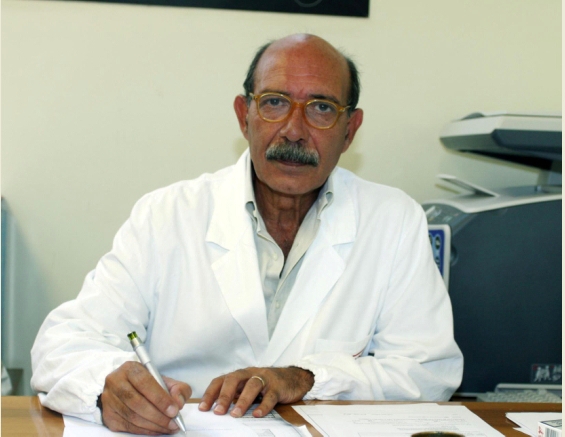Dott. Guido Palamara
Responsabile: Dermatologia Infettiva
Istituto Dermatologico San Gallicano IRCSS - Roma
Nato a Roma il 26.01.1948 , dopo aver conseguito la Licenza Liceale Scientifica si laurea presso l’Università “La Sapienza” di Roma in Scienze Biologiche nel 1971.
Nel 1976 consegue la Specializzazione in Analisi Chimico-cliniche e microbiologiche.
Dal 1972 al 1980 dirige il Reparto di Farmaco-tossicologia della Polifarma di Roma.
Dal 1980 ricopre il ruolo di Assistente del Reparto di Microbiologia e Micologia Sperimentale dell’Istituto S. Gallicano di Roma.
Nel 1984 consegue la laurea in Medicina e Chirurgia presso l’Università “La Sapienza” di Roma dove nel 1987 si specializza in Dermatologia e Venereologia.
Nel 1990 viene nominato Aiuto Medico nel Reparto di Microbiologia e micologia Sperimentale e nominato responsabile della Sezione di Batteriologia e Microbiologia.
Nel 1998 viene nominato Dirigente Medico di I Livello presso la U.O.C. di Dermatologia Infettiva e nominato Responsabile della U.O. HIV/AIDS di III Livello.
Dal 2006 ricopre il ruolo di Direttore della U.O.C. di Dermatologia Infettiva dell’ISG.
Membro della SIDEMAST e della SIMIT. Membro del CIO (Comitato Infezioni Ospedaliere) dell’ISG.
In questi anni è stato relatore in numerosi Congressi Nazionali e Internazionali e ha pubblicato più di 100 lavori , 25 dei quali indicizzati.
Numerose le sperimentazioni cliniche sia in campo dermatologico che infettivologico con particolare riguardo alle infezioni da HIV, HPV e HSV.
Ha partecipato alla sperimentazione di fase I del vaccino anti-TAT dell’Istituto Superiore di Sanità (Barbara Ensoli) ed è Investigatore Principale (PI) della fase II dello stesso vaccino.
Ha partecipato alla sperimentazione expanded access di alcuni farmaci antiretrovirali come il Raltegravir e l’Etravirina nonché responsabile per il S. Gallicano del progetto GNOMO sullo studio del Tenofovir.
Dal 2004 in collaborazione con il Laboratorio di Virologia dell’Università “Tor Vergata” di Roma (prof. Carlo Federico Perno) svolge una ricerca sulla genotipizzazione del virus HIV in soggetti naive e in fallimento viro-immunologico.
Responsabile della Linea I della Ricerca Corrente dell’ISG.
La U.O.C. di Dermatologia e Venereologia è il Centro di riferimento per tutte le Cliniche infettivologiche del Lazio per la diagnosi e cura delle Malattie Sessualmente Trasmesse (Sifilide, gonorrea, clamidia, micoplasmi, HPV, herpes etc.) e uno dei più importanti Centri per la diagnosi e terapia della infezione da HIV avendo circa 450 pazienti in follow-up e 200 in terapia antiretrovirale.






